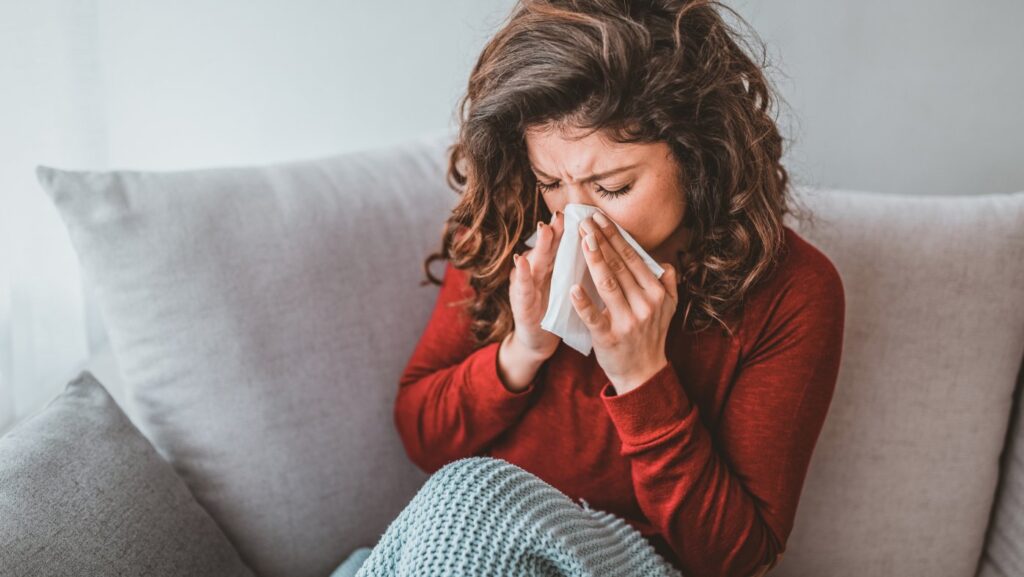Understanding the Flu : Flu Symptoms , Prevention, and Treatment
The flu, also known as influenza, is a highly contagious viral infection that affects the respiratory system, including the nose, throat, and lungs. While it’s often confused with the common cold, the flu can be more severe and lead to serious complications, especially in young children, the elderly, and individuals with weakened immune systems. Let’s explore the flu, its symptoms, ways to prevent it, and how to treat it effectively.

What is the Flu?
Influenza, commonly referred to as the flu, is caused by influenza viruses, which can spread easily from person to person through droplets when someone coughs, sneezes, or talks. It usually peaks during the colder months and can spread rapidly in crowded environments like schools and workplaces.
The flu typically comes on suddenly and may leave you feeling drained and unwell for days. While most people recover within a week or two, it can sometimes lead to severe complications such as pneumonia or bronchitis.

Common Flu Symptoms
The flu can hit hard and fast, with symptoms that are more intense than those of a common cold. Common flu symptoms include:
- Fever (often high)
- Chills and sweating
- Cough (dry or productive)
- Sore throat
- Runny or stuffy nose
- Muscle aches and joint pain
- Fatigue and weakness
- Headaches
- Nausea and vomiting (more common in children)
It’s important to note that not everyone with the flu will experience all symptoms. For instance, some people may have the flu without a fever.

How to Prevent the Flu
Prevention is the best way to protect yourself from the flu. Here are some effective ways to reduce your risk:
1. Get Vaccinated
The flu vaccine is the most effective way to prevent the flu. It’s recommended to get the flu shot every year, as the flu virus evolves, and the vaccine is updated accordingly. The vaccine is especially important for vulnerable groups like young children, pregnant women, the elderly, and individuals with chronic illnesses.
2. Practice Good Hygiene
Simple hygiene measures can go a long way in preventing the spread of the flu. Make sure to:
- Wash your hands frequently with soap and water for at least 20 seconds.
- Use alcohol-based hand sanitizers when soap and water are not available.
- Avoid touching your face, especially your nose, mouth, and eyes, where the virus can enter.
- Cover your mouth and nose with a tissue or your elbow when coughing or sneezing.
3. Avoid Close Contact with Sick People
If someone around you is sick with the flu, try to avoid close contact. If you’re sick, stay home to prevent spreading the virus to others.
4. Boost Your Immune System
Maintain a healthy immune system by eating a balanced diet, exercising regularly, staying hydrated, and getting enough sleep.

Flu Treatment and Management
If you catch the flu, there are several steps you can take to ease symptoms and speed up recovery:
1. Rest and Stay Hydrated
Fluids are essential when you have the flu. Drink plenty of water, herbal teas, or broths to stay hydrated. Rest is also crucial, as it helps your body fight the virus and recover more quickly.
2. Use Over-the-Counter Medications
Medications such as acetaminophen (Tylenol) or ibuprofen (Advil) can help reduce fever, body aches, and headaches. However, never give aspirin to children or teenagers recovering from flu-like symptoms due to the risk of Reye’s syndrome.
3. Consider Antiviral Medications
If taken early, antiviral drugs like Tamiflu or Relenza can help shorten the duration of the flu and reduce the severity of symptoms. These are typically prescribed for individuals at higher risk of complications.
4. Consult a Doctor
If you or someone you care for is at higher risk of complications from the flu (such as young children, the elderly, or those with underlying conditions), contact a healthcare provider. Seek immediate medical attention if you experience difficulty breathing, chest pain, or persistent dizziness.

Complications of the Flu
While most people recover from the flu without serious problems, it can sometimes lead to complications, especially in high-risk groups. Possible complications include:
- Pneumonia
- Bronchitis
- Sinus infections
- Ear infections
In severe cases, the flu can lead to hospitalization or even death, particularly in vulnerable populations.

The Difference Between the Flu and a Cold
It’s easy to mistake the flu for a common cold, but there are key differences. The flu generally comes on suddenly, with more severe symptoms such as high fever, intense body aches, and fatigue. In contrast, colds tend to develop gradually and are typically milder, with symptoms like a runny nose, sneezing, and a sore throat being more common.

Conclusion
The flu is a common yet potentially serious illness that can affect anyone. Fortunately, by taking preventative measures like getting vaccinated, practicing good hygiene, and knowing how to manage symptoms, you can protect yourself and your loved ones from its worst effects. If you do catch the flu, proper rest, hydration, and treatment can help you recover more quickly and avoid complications.
Stay informed, take action, and be proactive in preventing the flu to ensure a healthier flu season for everyone.
